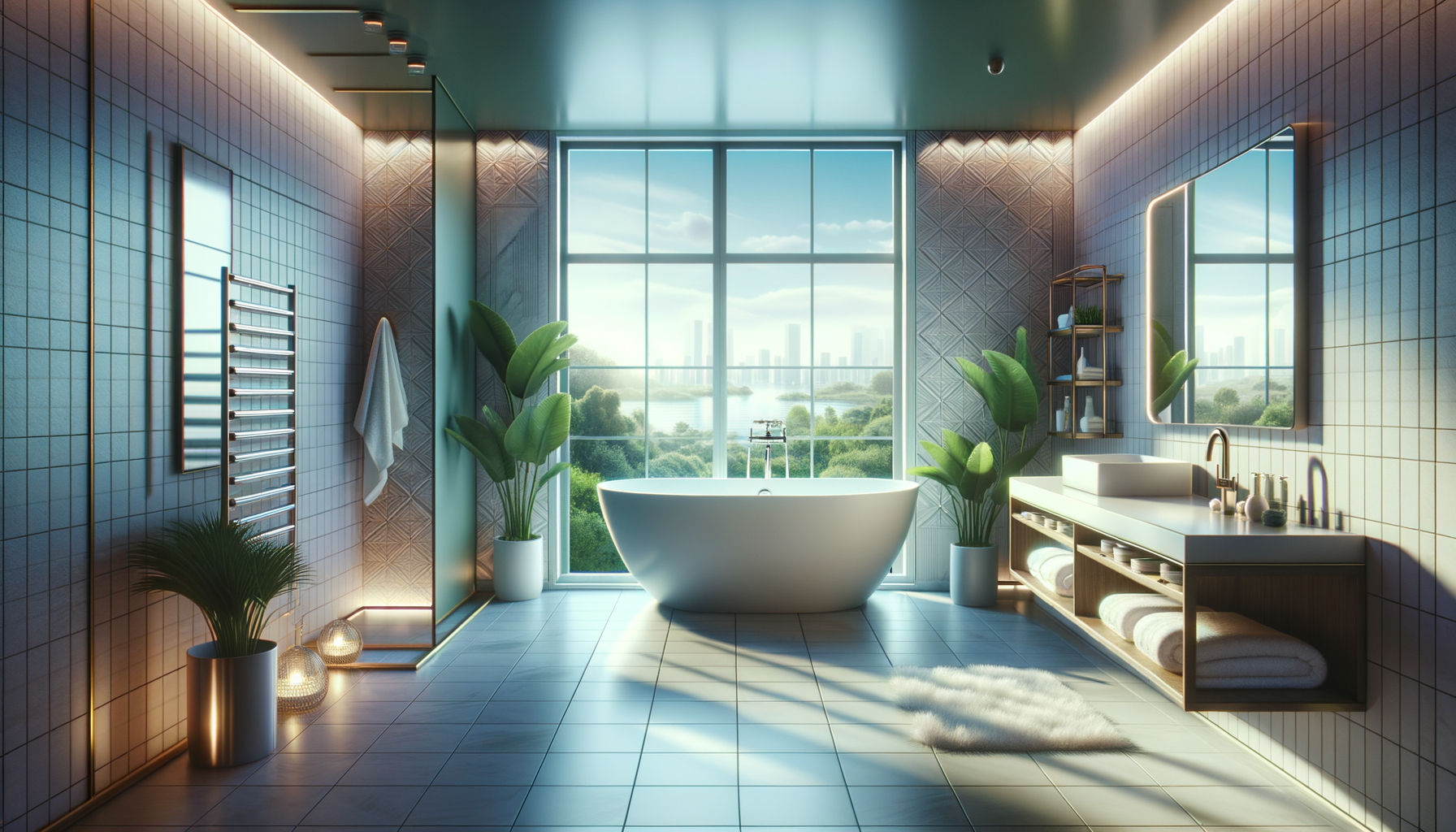Understanding the Scope of Your Renovation
Embarking on a bathroom renovation journey begins with understanding the scope of the project. This step is crucial as it sets the foundation for all subsequent decisions. A comprehensive assessment of your current bathroom setup is necessary. Start by identifying what aspects need improvement. Are you looking to enhance functionality, update aesthetics, or perhaps both?
Consider the layout and space available. A well-thought-out plan can maximize space usage, making even the smallest bathrooms feel more spacious. Assess the plumbing and electrical systems, as these are integral parts of any bathroom. Updating these systems can prevent future problems and ensure the longevity of your renovation efforts.
Budgeting is another critical component. Establish a budget that accommodates both expected and unforeseen expenses. It’s wise to allocate a contingency fund for unexpected issues that may arise once the renovation begins. According to industry experts, setting aside an extra 10-20% of your budget for contingencies is a prudent approach.
- Identify key areas for improvement
- Evaluate current plumbing and electrical systems
- Set a realistic budget with a contingency fund
By thoroughly understanding the scope of your renovation, you lay the groundwork for a successful transformation of your personal sanctuary.
Selecting Quality Materials and Fixtures
Choosing the right materials and fixtures is pivotal in achieving a bathroom that is both functional and aesthetically pleasing. The materials you select should align with your budget while offering durability and style. For instance, ceramic tiles are a popular choice for flooring due to their water resistance and variety of designs. Meanwhile, natural stone tiles can add a touch of luxury but often come with a higher price tag.
When it comes to fixtures, prioritize those that offer both efficiency and design. Water-saving faucets and showerheads not only contribute to sustainability but also reduce utility bills. Consider the finish of your fixtures as well, whether it’s polished chrome, brushed nickel, or matte black, each offers a distinct look and feel.
Don’t overlook the importance of storage solutions. Opt for vanities and cabinets that provide ample storage without compromising on space. Floating vanities can be a great choice for smaller bathrooms, offering storage while maintaining an open feel.
- Choose durable and stylish materials
- Opt for water-efficient fixtures
- Incorporate smart storage solutions
By carefully selecting materials and fixtures, you ensure that your bathroom renovation is both practical and visually appealing.
Incorporating Modern Design Trends
Modern bathroom design trends offer a plethora of options to elevate your space. One popular trend is the incorporation of natural elements. Think wooden accents, plants, and stone textures that bring a sense of calm and tranquility. These elements can be seamlessly integrated into your bathroom through accessories, wall coverings, or even furniture.
Minimalism continues to be a significant trend, emphasizing clean lines and uncluttered spaces. This approach not only enhances the visual appeal but also makes maintenance easier. Consider floating vanities and frameless glass showers to achieve a minimalist look.
Another trend gaining traction is the use of smart technology. From LED mirrors with built-in lighting to smart showers that remember your preferred water temperature, technology is transforming the bathroom experience. These innovations not only add convenience but also a touch of luxury.
- Incorporate natural elements for tranquility
- Embrace minimalism for a clean, modern look
- Explore smart technology for added convenience
By embracing modern design trends, you can create a bathroom that is both contemporary and comforting.
Ensuring Functionality and Accessibility
While aesthetics are important, functionality and accessibility should not be overlooked in a bathroom renovation. A well-designed bathroom should cater to the needs of all users, including those with mobility challenges. Consider incorporating features such as grab bars, walk-in showers, and non-slip flooring to enhance safety and accessibility.
The layout plays a crucial role in functionality. Ensure that there is adequate space around fixtures for ease of movement. A double vanity can be a practical addition for shared bathrooms, providing ample space for multiple users.
Lighting is another aspect that significantly impacts functionality. A combination of ambient, task, and accent lighting can create a well-lit space that is both functional and inviting. Consider dimmable lights to adjust the ambiance according to your needs.
- Incorporate safety features for accessibility
- Optimize layout for ease of movement
- Use layered lighting for functionality
By prioritizing functionality and accessibility, you ensure that your renovated bathroom is not only beautiful but also practical for everyday use.
Hiring Professionals vs. DIY: Making the Right Choice
Deciding whether to hire professionals or undertake a DIY bathroom renovation is a significant decision. Both options have their advantages and drawbacks, and the right choice depends on your skills, budget, and the scope of the renovation.
Hiring professionals can offer peace of mind, as they bring expertise and experience to the table. They can handle complex tasks such as plumbing and electrical work, ensuring that the renovation complies with local building codes. Additionally, professionals often have access to wholesale materials, which can be cost-effective in the long run.
On the other hand, a DIY approach can be rewarding if you have the necessary skills and time. It allows for creative freedom and can be more budget-friendly. However, it’s important to be realistic about your abilities and the complexity of the project. Mistakes in a DIY renovation can lead to increased costs and time delays.
- Consider professional expertise for complex tasks
- DIY can offer creative freedom and cost savings
- Evaluate your skills and project complexity
Ultimately, whether you choose to hire professionals or go the DIY route, the key is to ensure that the end result is a bathroom that meets your needs and enhances your home.








